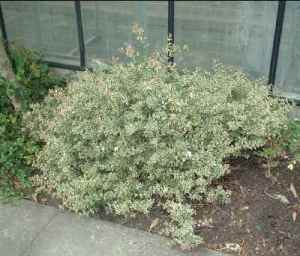A very underrated shrub is of the genus Abelia. That most species were not hardy enough is relative. Granted, they require a sheltered place, preferably in the (full) Sun, but most survive winters if they do they sometimes die to the ground.
The small-scale cultivated species Abelia mosanensis even hardy. N. Korea coming out of this kind is already several years in the Botanical Garden of Salaspils in Latvia and freeze difficult or impossible. There is much confusion over the correct name. Although bred in the Netherlands is not large assortment, you can find a plant under different names.
One reason for the available species and cultivars need to start is to:
Abelia, including by the Japanese botanist Hara split part he Zabelia placed in the genus, belongs to the family Caprifoliaceae (honeysuckle family) and is closely related to Dipelta, Kolkwitzia and Linnaea. According to some views, these four generations of the family Linaeaceae.
The genus has about 23 species, mostly concentrated in North-East Asia and three species in Mexico. The genus is named after Dr. Clarke Abel (1780-1826), who discovered the species Abelia chinensis during his trip to China when he was a doctor was linked to the embassy of Lord Amherst.
Abelia ‘s are summer or winter green, small and medium-sized, densely branched shrubs. Leaves opposite, sometimes in whorls of three or four non-flowering branches, toothed or smooth edges and kortgesteeld. Flowers in axillary-independent screens with 1-8 flowers or terminal and many flowered, sessile or shortly stalked. The corolla is bell or funnel-shaped tube with a straight or curved, often bilabial, white, or pink (purple) red, sometimes fragrant. Four stamens at different heights are implanted in the crown, and a long style and two to five interleaves. These linear, ovoid or elliptical, often reddish and durable (as we also nice to see in Leycesteria formosa, Lonicera involucrata and Heptacodium miconioides.). Ovary driehokkig, but usually one, rarely two seeds. The fruit is a small, leather-like sleeve (nut) with a cylindrical seed.
Culitvatie
The types range from hardly anything to moderately hardy or frost sensitive. The hardy species are trouble free plants that can survive harsh conditions. They prefer full sun or light shade and require a well drained, calcareous soil. They require summer, however, regular watering. They are easy to multiply by summer cuttings and resistant to cutting, for example when used as a low hedge. Except for a single lock, the plant resistant to pests and diseases. They are also well suited as a pot on the patio and balcony. You can now late summer with Abelia.
Abelia biflora
Rowing out wide shrub with reddish brown hairy first, later completely bare twigs. Leaves very shortly petiolate, 3-5 cm long, oval or egg-lanceolate, top bald or very sparsely hairy. The bottom along the veins densely hairy. Blooms in June to August with usually two flowers on a single stalk. They are 1.2 cm long, pale pink, sometimes almost white at the base with broad crown settling tube hairy on the outside. The crown lobes are narrow, almost flat. Bracts 4, inverted lanceolate. Native to China in the provinces of Hubei, Shanxi, Liaoning and Korea.
Introduced in 1923.
